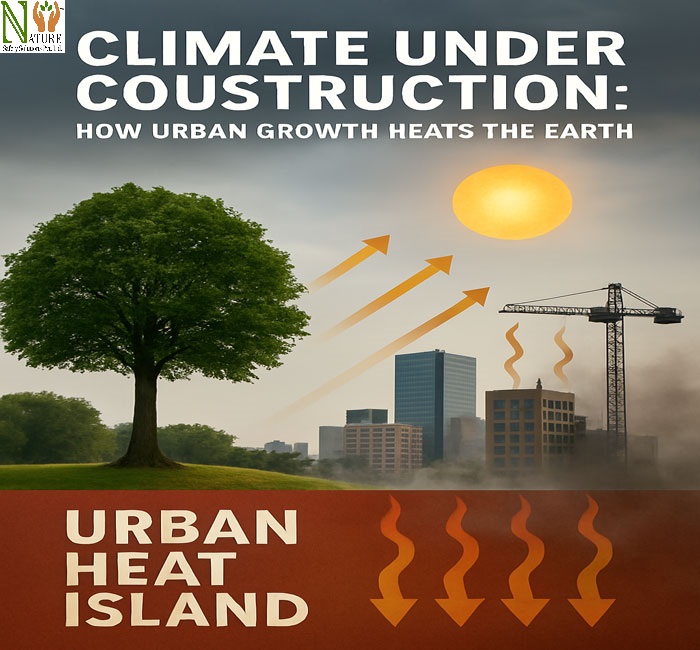Cities are growing fast—with new buildings, roads, and houses popping up every day. But as cities grow, they also get hotter. This is called the Urban Heat Island (UHI) effect. It happens because concrete, roads, and buildings trap heat, while trees and plants that cool the air are removed.
As a result, cities can feel much hotter than nearby villages or forests. This extra heat affects our health, uses more energy, and even adds to climate change.

What Is the Urban Heat Island Effect?
The Urban Heat Island effect occurs when urban areas become significantly warmer than nearby rural areas. This happens because natural land surfaces—like grass, soil, and trees—are replaced with heat-retaining materials such as concrete, asphalt, glass, and metal. These surfaces absorb sunlight during the day and slowly release heat at night, causing cities to stay warmer for longer periods, especially after sunset.
On average, urban areas can be 1°C to 7°C (2°F to 13°F) hotter than surrounding countryside—creating localized zones of intense heat.
Causes of Rising Urban Temperatures
Several factors contribute to rising temperatures in cities:
- Loss of vegetation: Trees and plants cool the air through shade and evapotranspiration. Urban development often clears green cover, eliminating this cooling effect.
- Dark surfaces: Roads and rooftops made of blacktop or tar absorb large amounts of solar energy.
- Tall buildings: Skyscrapers and dense construction trap heat and block airflow, a phenomenon known as “canyon effect.”
- Waste heat: Air conditioners, vehicles, industries, and machinery release excess heat into the environment.
- Limited airflow: Narrow streets and packed construction reduce natural ventilation, trapping warm air.
Impact on Human Health
The UHI effect poses serious health risks, especially during heatwaves. High temperatures increase the chances of heat exhaustion, dehydration, and heatstroke, particularly among the elderly, children, and outdoor workers.
Urban residents also face higher exposure to air pollutants and ground-level ozone, which worsen respiratory conditions like asthma and bronchitis.
In extreme cases, prolonged exposure to heat can lead to increased mortality rates, especially in low-income areas that lack access to cooling, clean water, or healthcare.
Energy Demand and Climate Feedback
As cities heat up, demand for air conditioning and refrigeration rises, especially in summer months. This increased energy use raises electricity bills. It also leads to more fossil fuel consumption and greenhouse gas emissions. As a result, cities not only get hotter but also add more to global climate change. It’s a cycle that keeps repeating.
In addition, the extra energy needed for cooling strains power grids, leading to blackouts and energy shortages during peak times.
Environmental and Ecological Effects
Urban heat islands also harm the environment:
- Water quality declines as hot surfaces increase stormwater runoff temperature, affecting aquatic ecosystems.
- Wildlife in urban areas suffers due to extreme temperatures and lack of shade or water.
- Soil degradation occurs as natural ground is replaced with impervious surfaces, reducing water infiltration and increasing erosion risks.
Solutions and Mitigation Strategies
Addressing the UHI effect requires smart, sustainable urban planning. Some effective solutions include:
- Urban greening: Planting trees, green roofs, and vertical gardens to provide shade and reduce heat.
- Cool roofs and pavements: Using reflective or light-colored materials that reflect more sunlight and absorb less heat.
- Improved building design: Orienting buildings for better airflow and using natural ventilation methods.
- Public transportation and clean energy: Reducing car emissions and promoting electric transit systems.
- Water features: Integrating fountains, ponds, or misting systems to help cool public spaces.
Cities like Singapore, Copenhagen, and Melbourne are leading the way with urban forest strategies, green building codes, and climate-resilient infrastructure.
Also read:-
